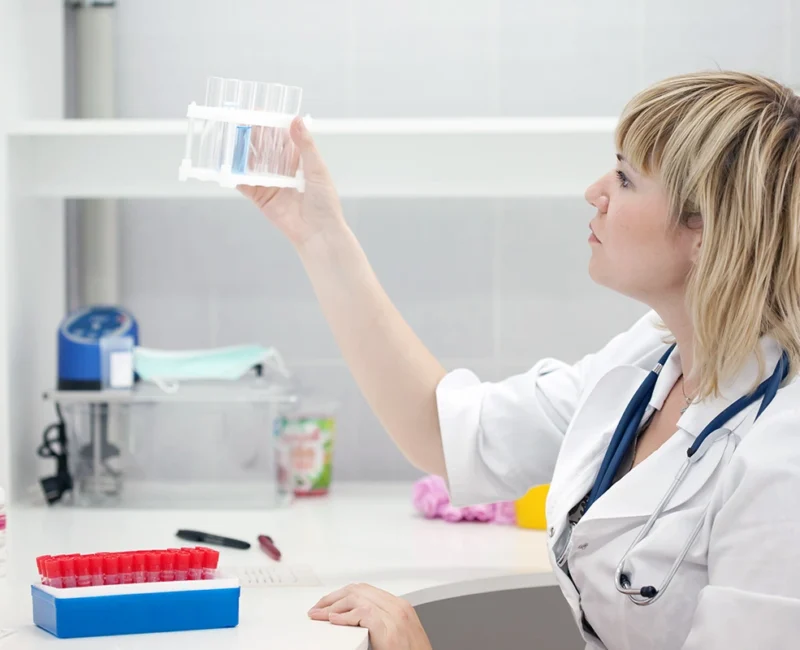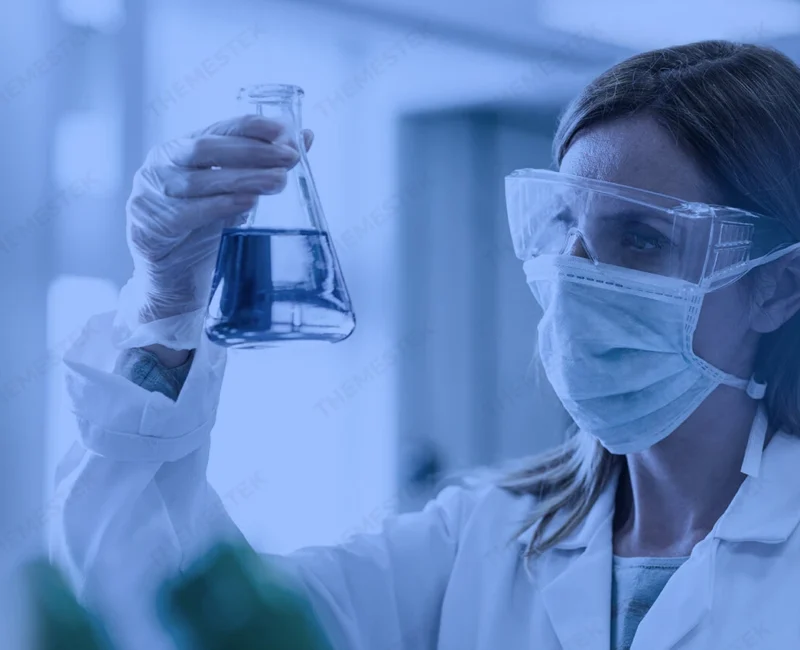SMSLA - YOUR ULTIMATE QUALITY TESTING & INSPECTION SERVICE IN INDIA
We at SMS Labs Private Limited, are passionate to meet and solve the challenges being faced by the industry in their quality service needs. In any given situation we are there as your quality partner to face along with you the growing needs of you and the industry. Our technical experts can assist you in any technical needs If a solution does not already exist, we’ll create a new solution that resolves your issue.
WE’LL ENSURE YOU ALWAYS GET
BEST RESULTS.
BEST RESULTS.
10 +
Major National and International Accreditations
OHSAS 18001:2007 – Provision of Laboratory Services in Food, Metals, Containers and Environmental Aspects.
300
Professionals
Major locations are Chennai, Bangalore, Mumbai, Ahmedabad, Visakhapatnam, Hyderabad, Coimbatore and Cochin.
10 +
Years Of Experience
SMS Labs was established in 2012 with the mission of holistic quality services in Testing, Inspection, Training and Advisory Services.
5000 +
Clientele
SMS LABS is analyzing chemical & biological testing of Environmental (Air & Stack, Water, Soil, sludge & solid waste, PAH, PCB analysis)
EXPLORE OUR MAIN SERVICES
We are always happy to help find the customer needs and specific customised solution for their needs.
SMSLA - YOUR ULTIMATE
QUALITY PARTNER
SMSLA is one of the best Testing Service providers in India, established in 2012 with the mission of holistic quality services in Testing, Inspection, Training, and Advisory services in the field of Food, Water, Environment, and Materials with state-of-the-art facilities.
WE ARE HERE FOR YOU
MAKE AN APPOINTMENT TODAY
MAKE AN APPOINTMENT TODAY
SMSLA provides a wide range of service including Testing, Inspection, Training and other related services like Food packaging material testing for sea food and other sectors. SMSLA also carries out Environmental Analysis, Social compliance, R&D, method development, nutritional profile and shelf-life studies.
WHAT SPEAK PEOPLE

AVt Gavia Foods
Food quality represents the sum of all properties and attributes of a food item that are acceptable to any customer. These food quality attributes include the testing of appearance, size, shape, gloss, Colour, consistency, texture, flavor, contaminants, toxins, residues, antibiotics, nutritional labelling and shelf-life. “Quality food” results in good health. “We greatly appreciate the support from SMS Labs, which always enables us to deliver quality products for our customers across Globe, because good health can’t wait”.

Williams Jones
I have known SMSLA in India from early 2016 and was associated with them in Food Inspection services for my client in Japan for one of the production facility in India. I found inspection team of SMSLA is highly professional and extremely knowledgeable in specific associated processes. Their services were of global standards in integrity and quality. Their technical expertise is clearly visible and their track record with the industry is exemplary.
In my 8 years interaction with them their main laboratory in India for antibiotic residual testing I have to say that I am extremely fortunate to have them as quality partner. They have a highly professional approach and the outstanding skill in understanding and interpreting the technical data and as per national and international guidelines. I highly recommend them...
I am the quality Head one of the key players in Indian poultry. Our Samples are regularly getting analyzed by SMSLA. They have high professional approach in logistics of collection and transportation of samples in specific preserving conditions and friendly officials. Their well trained samplers were always there even in pandemic condition to assist us. One of the best laboratories with good turnaround time and accurate results
LATEST NEWS & BLOGS
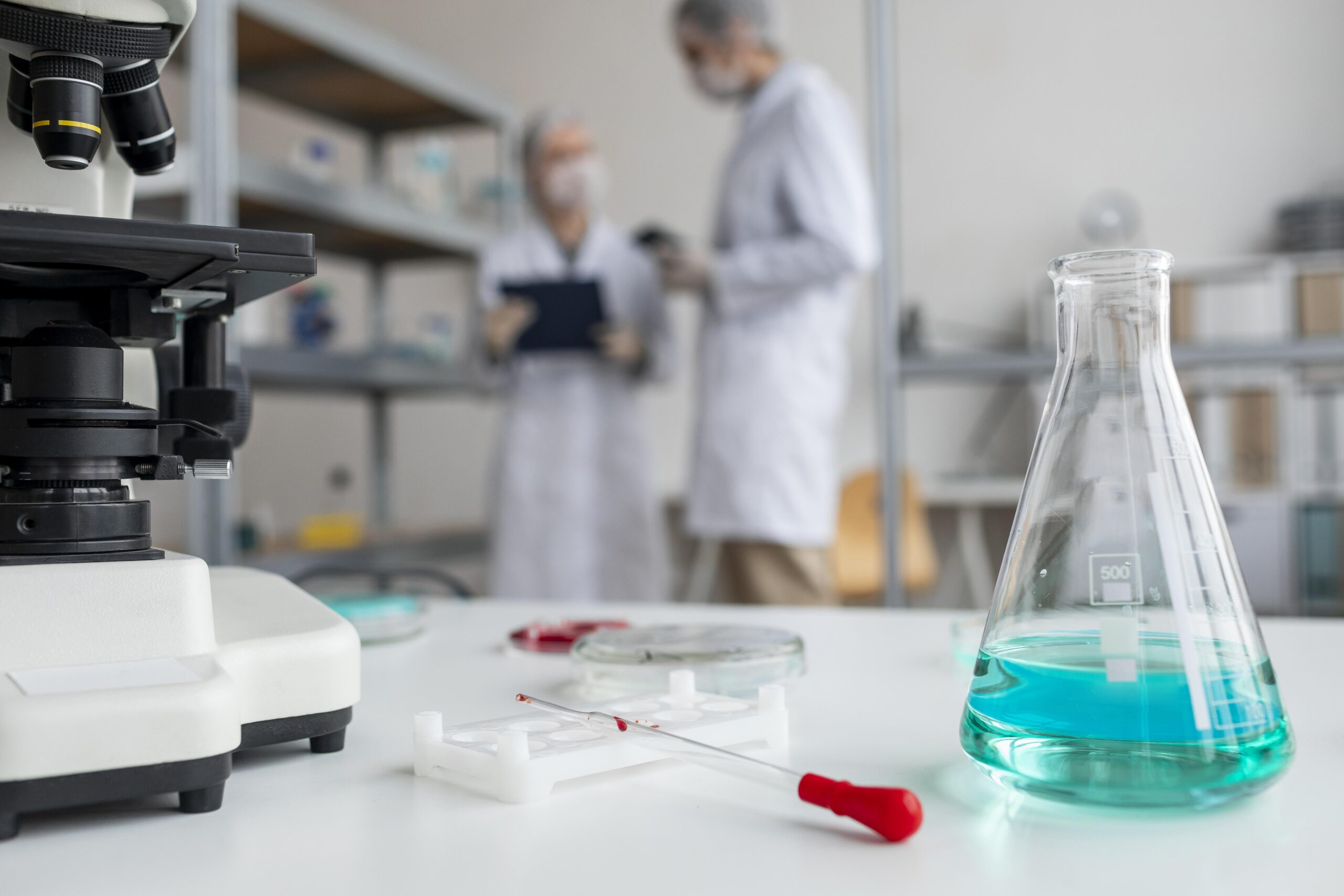
Ensuring food is safe has become more important than ever in today's increasingly globalized society when food products are imported and exported across continents. Customers now demand greater quality standards from the food they eat because they are increasingly concerned about their health. But as industrialized food production has increased, foodborne illnesses have also grown in importance. This is where food microbiology testing plays a crucial role.
The study of microbes that live in, produce, or infect food is known as food microbiology. These microorganisms, which can either contaminate food or endanger customers' health, can include bacteria, molds, yeasts, and viruses. The scientific method of examining food for the presence of dangerous pathogens or microorganisms that could compromise its safety and quality is known as food microbiology testing. Food manufacturers may protect their products against microbial contamination and guarantee that what is sold to consumers is safe to consume by regularly testing their food microbiology.
Why Is Food Microbiology Testing Necessary?
Food can become contaminated by microorganisms at any stage of the manufacturing, processing, packing, or delivery process. Microbial growth can be caused by a number of factors, including inadequate sanitation, improper storage, or contamination during transportation. Fresh vegetables, dairy products, meat, and seafood are among the raw materials that are most susceptible to microbial contamination.
These microorganisms may remain undiscovered and have detrimental effects on health if microbiology testing is not performed. Foodborne illness outbreaks can be caused by contaminated food, and their symptoms can range from minor discomfort to serious infections and, in the worst situations, even death. Salmonella, Listeria, and Escherichia coli (E. coli) are a few prevalent foodborne pathogens that have caused significant food recalls in recent years.
Food makers can detect any contamination early and take corrective action before the product reaches customers by using food microbiology testing. This testing assures adherence to strict food safety regulations, safeguards public health, and helps avoid foodborne outbreaks.
Types of Microorganisms Detected Through Food Microbiology Testing
There is a wide variety of microorganisms that can be harmful to human health and are commonly detected through food microbiology testing. These include:
- Bacteria: Harmful bacteria such as Salmonella, Escherichia coli (E. coli), and Listeria monocytogenes can cause severe gastrointestinal illnesses. Bacteria multiply rapidly in foods, especially when stored at incorrect temperatures, making bacterial testing a crucial part of ensuring food safety.
- Viruses: Certain viruses, such as norovirus and hepatitis A, can be transmitted through contaminated food, particularly in the case of improperly handled shellfish, fruits, and vegetables. Viral contamination is harder to detect, but microbiology testing can help identify the presence of these viruses.
- Fungi: Molds and yeasts are responsible for food spoilage and can cause allergies or produce harmful mycotoxins in some cases. Mold contamination is a particular concern in grains, nuts, and dried fruits, which require routine food microbiology testing to ensure safety.
- Parasites: Some foodborne parasites, like Toxoplasma gondii, Giardia, and Cryptosporidium, can infect humans through undercooked meats or contaminated water and can lead to severe infections, especially in immunocompromised individuals.
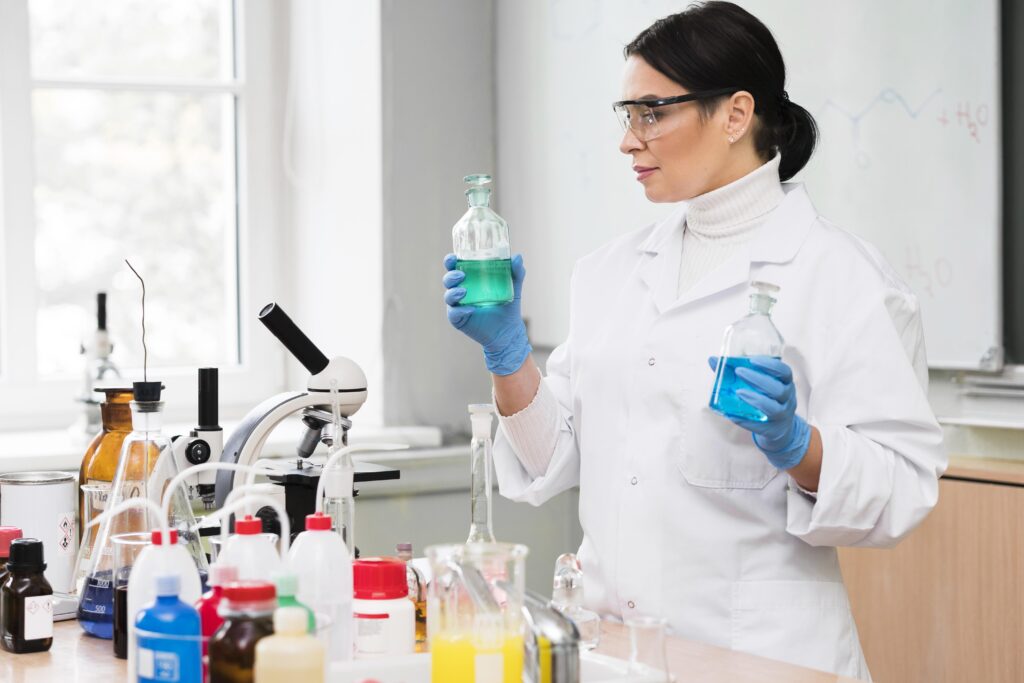
How Does the Food Microbiology Testing Process Work?
The process of food microbiology testing follows a systematic approach designed to detect, isolate, and identify harmful microorganisms in food samples. The typical steps involved in testing include:
- Sample Collection: Food samples are collected from various stages of the production chain. This includes raw ingredients, processing environments, and finished products. In many cases, surfaces and equipment used during food preparation are also swabbed for microbiological analysis to detect potential cross-contamination points.
- Laboratory Analysis: After collection, samples are sent to laboratories specializing in food microbiology testing. Different techniques are used depending on the type of microorganism being tested for. For bacteria and fungi, culturing methods are used where samples are incubated on specific growth media to encourage microbial growth. For viruses and parasites, molecular methods like PCR (Polymerase Chain Reaction) and ELISA (Enzyme-Linked Immunosorbent Assay) are employed to detect their presence. Advanced techniques like next-generation sequencing (NGS) are also being used for identifying a broader spectrum of microorganisms in food samples.
- Reporting and Action: Once testing is completed, the laboratory provides a detailed report that outlines the microorganisms detected and their concentrations. If harmful pathogens are present at unsafe levels, corrective actions are recommended, such as reprocessing or recalling the affected batch.
Regular and systematic microbiology testing ensures that contamination risks are mitigated and that any issues are addressed before products reach the shelves.
Benefits of Food Microbiology Testing for Food Manufacturers
Microbiology testing has several advantages. In order to gain and keep the trust of consumers, food manufacturers must make sure that their products are free of dangerous germs. Among the principal benefits are:
Better Food Safety: Manufacturers can avoid microbial contamination and safeguard public health by routinely conducting food microbiology testing. This is especially important for high-risk food groups such as dairy, meat, fish, and prepared foods.
Regulatory Compliance: Strict standards for microbiological testing are mandated by food safety regulators worldwide, such as the FDA, EFSA, and FSSAI. Achieving legal permissions and selling food items in foreign markets need adherence to these regulations.
Reduced Risk of Recalls: One of the main reasons why food recalls occur is microbial contamination. By spotting and treating food contamination.
The Role of Food Microbiology Testing in the Future
As the food industry continues to evolve, microbiology testing will become even more crucial. With the increasing complexity of food supply chains, there are more opportunities for contamination at every step. Innovations in testing technology, such as the use of real-time testing and rapid microbial detection systems, are making food microbiology testing more efficient and accurate.
Moreover, as consumers demand more transparency regarding the origins and safety of their food, food microbiology testing will remain a key component of food safety protocols. It ensures that the food industry remains vigilant against the ever-present risk of microbial contamination, thereby safeguarding public health.
Conclusion
In conclusion, food microbiology testing is an indispensable aspect of food safety and quality assurance. By detecting harmful pathogens and microorganisms, this testing helps prevent foodborne illnesses, ensures regulatory compliance, and maintains the integrity of food products. For food manufacturers, regular testing provides a vital safeguard against contamination risks and helps protect both their reputation and the health of their customers.
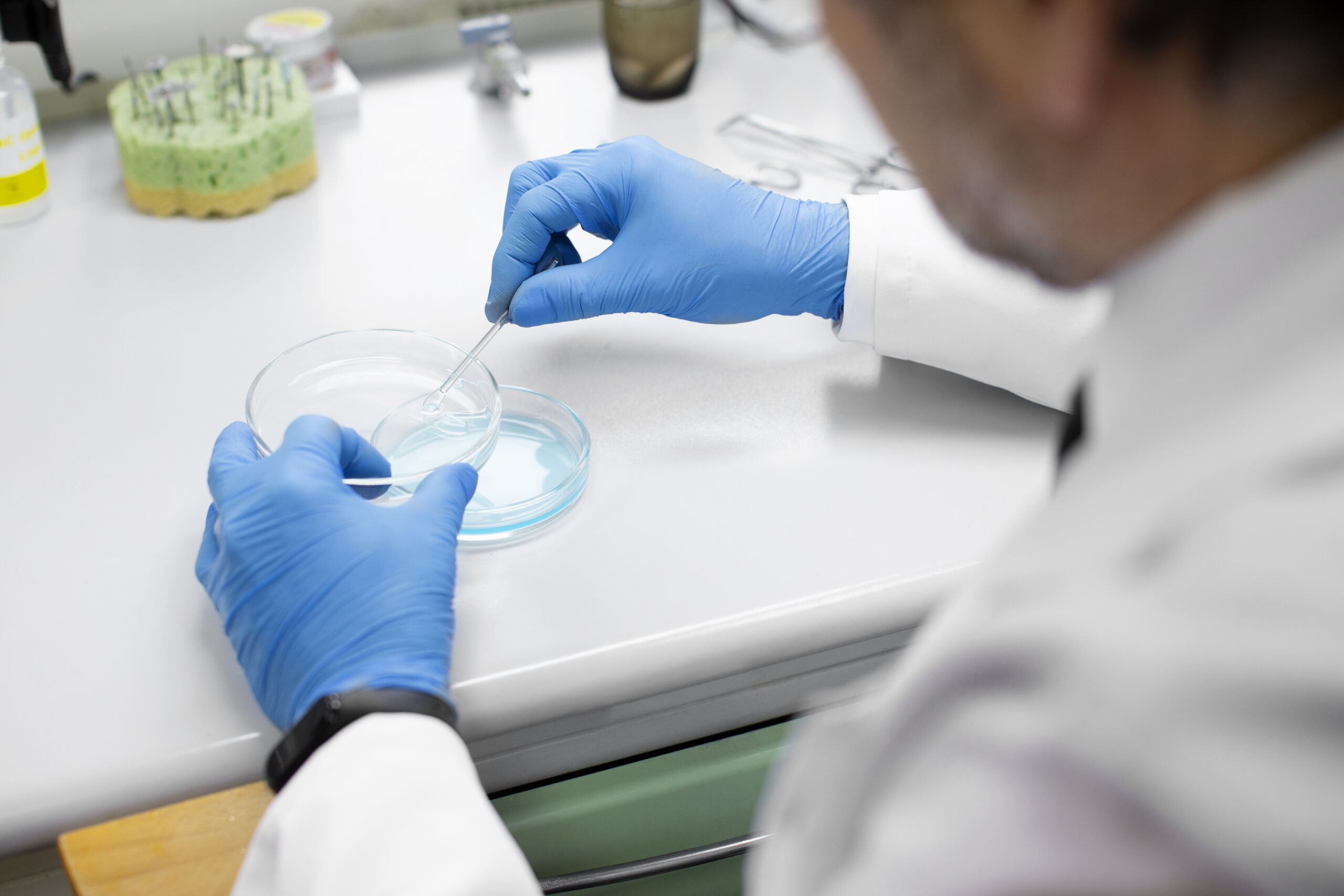
Ensuring the safety, quality, and authenticity of food items is crucial in the modern, international food market. Maintaining these standards is made possible by food sample analysis, which gives consumers, regulatory agencies, and food producers confidence in the goods they create, control, and eat. Food samples are evaluated as part of the process to look for pollutants, confirm nutritional information, and make sure food safety laws are being followed.
A range of techniques are used in food sample analysis, all of which are intended to produce precise and trustworthy results. These approaches range from conventional laboratory procedures to cutting-edge technologies capable of identifying even minute amounts of dangerous materials. In this blog, we'll look at the best techniques for food sample analysis, which will guarantee food safety and quality by providing precise results.
1. Microbiological Testing
When analyzing food samples, one of the most popular techniques is microbiological testing. The main application of this method is to find microorganisms in food products, including mold, bacteria, viruses, and yeasts. If harmful organisms such as Salmonella, Listeria, and E. coli are not detected and managed, they might result in major health problems. Food manufacturers can verify that their products are free of these infections by using microbiological testing.
Food samples are put on a growth medium that promotes the growth of microorganisms in order to conduct culture-based food testing lab. Scientists can count and identify any colonies of microorganisms that form during incubation. A more sophisticated technique called PCR (Polymerase Chain Reaction) amplifies microorganisms' DNA, making it simpler to find even minute amounts of dangerous bacteria or viruses.
2. Chemical Analysis
The identification of chemical contaminants such as pesticides, heavy metals, and food additives is made possible by chemical analysis, which is an essential part of food sample analysis. By using this technique, food products are guaranteed to meet safety regulations and contain only authorized amounts of chemicals.
Complex chemical mixtures are separated and examined using methods like gas chromatography (GC) and high-performance liquid chromatography (HPLC). HPLC works best for non-volatile molecules, whereas GC is utilized for volatile ones. Chromatography and mass spectrometry (MS) are frequently employed to identify and quantify particular chemical substances. Toxins and insecticides in trace concentrations can be found using this extremely sensitive approach.
The general objective of reliable food sample analysis is furthered by chemical analysis, which guarantees that food products are free of dangerous substances.
3. Nutritional Analysis
Nutritional analysis is an essential part of food sample analysis, especially for labeling purposes. It determines the nutritional content of food products, such as carbohydrates, proteins, fats, vitamins, and minerals. This analysis is necessary for food manufacturers to provide accurate nutrition facts on packaging.
Spectrophotometry measures the amount of light absorbed by a solution to determine the concentration of specific nutrients, such as proteins or vitamins. The Kjeldahl Method is widely used for determining the nitrogen content in food, which is then used to calculate the protein content. Soxhlet Extraction, on the other hand, is used for determining fat content by extracting lipids from food samples for analysis.
By utilizing these methods, food sample analysis ensures that nutritional labels are accurate, helping consumers make informed dietary choices.
4. Sensory Analysis
The evaluation of food products' taste, texture, aroma, and appearance is done through sensory analysis. This kind of analysis is nevertheless vital to the examination of food samples even if it is subjective and dependent on human senses. Food goods are guaranteed to satisfy consumer expectations regarding flavor and quality through sensory analysis.
Characteristic A skilled panel of tasters assesses particular sensory characteristics of food products, such as sweetness, bitterness, or creaminess, as part of the sensory testing process. In triangle testing, three samples are provided, two of which are identical, and the testers' job is to find the odd one. Hedonic testing involves asking consumers who are not trained to rate how much they like a product on a scale.
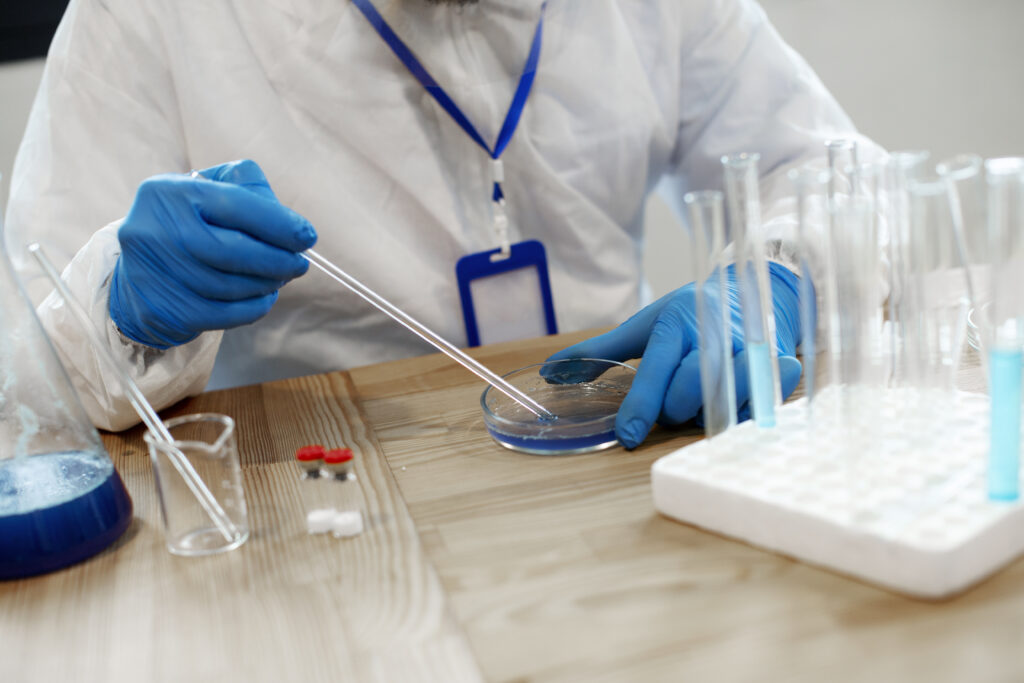
5. Allergen Testing
Allergen testing is a critical method in food sample analysis, particularly for consumers with food allergies. Even trace amounts of allergens like peanuts, shellfish, or gluten can cause severe reactions in sensitive individuals. Allergen testing ensures that food products are accurately labeled and safe for people with allergies.
The Enzyme-Linked Immunosorbent Assay (ELISA) method detects specific proteins that cause allergic reactions. ELISA is highly sensitive and can detect even minute amounts of allergens in food products. Polymerase Chain Reaction (PCR) can also be used to detect allergenic proteins by amplifying their DNA, ensuring that food products are free from unintended allergens.
Allergen testing ensures food products are safe for individuals with food allergies, helping to prevent allergic reactions and ensure regulatory compliance.
6. Moisture Content Analysis
Analyzing the moisture content of food products is essential for figuring out their stability, texture, and shelf life. Excessive moisture content can shorten the product's shelf life by encouraging the growth of microbes, while insufficient moisture can change the texture and flavor of the product.
Moisture content is often ascertained by the gravimetric method, which entails drying a food sample and calculating the weight loss. Karl Fischer Titration is used for more accurate measurement, particularly in low-moisture food goods like powdered meals.
Food samples must be analyzed for moisture content in order for the food products to remain safe and of high quality throughout time.
7. Food Adulteration Testing
Food adulteration occurs when non-food substances or inferior-quality ingredients are added to food products. Food sample analysis methods help detect adulteration, ensuring food authenticity and consumer trust.
Fourier Transform Infrared Spectroscopy (FTIR) measures how food samples absorb infrared light, identifying adulterants based on their molecular composition. Near-infrared spectroscopy (NIR) is another method used to detect adulteration by analyzing the light reflected from food samples and identifying any deviations from the expected composition.
These methods ensure that food products are genuine and free from harmful adulterants, making food sample analysis vital for maintaining food integrity.
Conclusion
Food samples analysis a crucial step in guaranteeing the authenticity, safety, and quality of food items. Food sample analysis techniques, which range from chemical and microbiological testing to sensory evaluation and allergen testing, give precise and trustworthy results that support manufacturers' regulatory compliance and customer safety.
Through the use of sophisticated methods such as mass spectrometry, ELISA, PCR, and chromatography, food sample analysis guarantees that every facet of a food product remains fully investigated. Whether the goal is to identify contaminants, confirm nutritional value, or make sure allergens are present, these techniques yield precise and reliable results that are essential in today's food market.
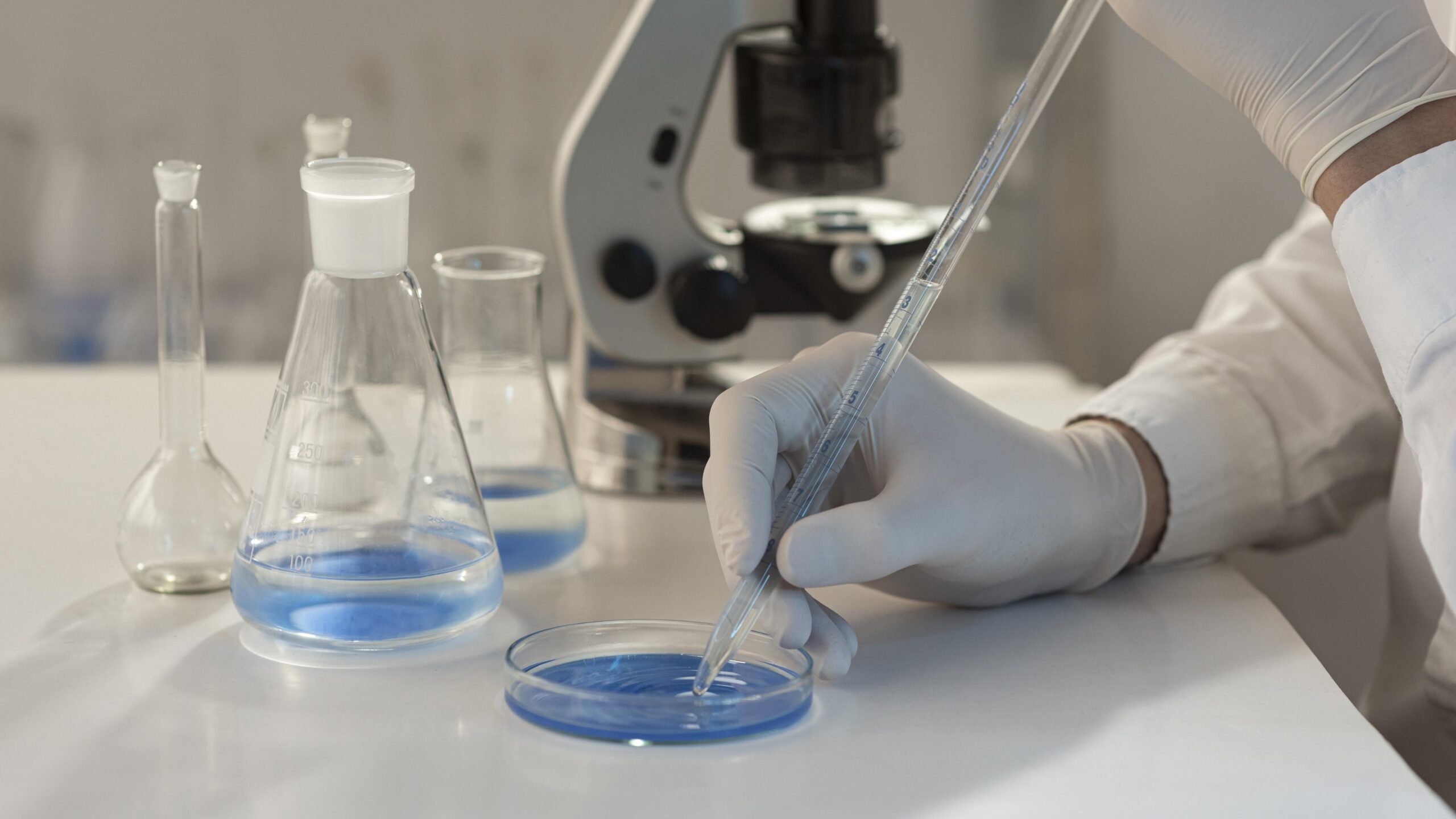
Customers are expecting the food business to be more transparent in today's world when people are becoming more health-conscious. Consumers are curious about what's in their food, how it impacts their health, and if it satisfies their nutritional requirements. There is a lot of pressure on food manufacturers to make sure that their products are labeled correctly and are nutritious because of this shift in consumer expectations. This is where nutritional lab testing becomes important, acting as a safeguard for food safety, quality, and legal compliance.
In this blog, we will explore the importance of Nutritional Lab Testing for food manufacturers, its benefits, and how it impacts both the industry and consumers.
What is Nutritional Lab Testing?
Food products are scientifically analyzed to ascertain their nutritional makeup through nutritional lab testing. This involves evaluating calories, fiber, and other vital ingredients like sugars and sodium, as well as macronutrients like proteins, carbs, and fats, and micronutrients like vitamins and minerals. These tests yield precise nutrition labels, which are essential for educating people about the nutritional value of the food they eat.
Nutritional testing is typically carried out in accredited laboratories using advanced testing methods, including chromatography, spectrophotometry, and mass spectrometry, to ensure precise and reliable results.
Ensuring Accurate Food Labeling
To guarantee the correctness of their food labeling, food manufacturers participate in nutritional lab testing for a number of reasons. Many nations have laws requiring nutrition labels, and any inconsistency between the label's stated nutritional value and the product's actual nutritional composition can have major regulatory repercussions, such as penalties, product recalls, or even product sales prohibitions.
Additionally, accurate nutrition labels contribute to consumer trust. Customers are more inclined to select a product when they see that it has the nutrients they need. On the other hand, inaccurate labeling can harm a brand's reputation and cause consumers to lose faith in it.
Compliance with Regulatory Standards
Food safety authorities like the Food and Drug Administration (FDA) in the United States and the Food Safety and Standards Authority of India (FSSAI) supervise the various national standards and laws that each country has for nutrition labeling. These rules specify the information that needs to be on a food label as well as the acceptable tolerance limits for certain nutrients.
Food makers risk legal repercussions, product recalls, or being unable to sell their products in some areas if they violate these standards. Nutritional lab testing guarantees that goods fulfill these stringent regulations, shielding producers from liability and guaranteeing that customers obtain correctly labeled, safe goods.
Supporting Product Development and Innovation
Another crucial instrument in developing new products is nutritional laboratory testing. Food producers work hard to innovate by launching new goods and enhancing their current lineup. Nutritional testing assists producers in determining whether a newly developed or reformulated product satisfies certain dietary requirements, including reduced sugar, elevated protein, or enhanced fiber.
For example, producers may wish to develop a low-fat, gluten-free snack to appeal to health-conscious consumers. They can make sure the product satisfies its intended nutritional claims and complies with food safety laws by using nutritional lab testing. This raises the product's legitimacy while also drawing in health-conscious customers.
Ensuring Consumer Safety
Consumer safety is a paramount concern for any food manufacturer. Nutritional Lab Testing plays a critical role in identifying potentially harmful substances or inaccuracies in the nutritional composition that could pose a health risk. For example, excess levels of sodium or sugars in a product could lead to health complications for consumers with certain conditions, such as hypertension or diabetes.
Moreover, Nutritional Lab Testing helps detect allergens that may not be listed on the label but could be present in trace amounts in the product. Allergens like gluten, dairy, nuts, or soy can cause severe allergic reactions in sensitive individuals. By identifying these allergens, manufacturers can ensure that they provide the necessary warning on the label or take steps to remove these allergens from the product.
Meeting Consumer Demands for Transparency
Customers of today are more knowledgeable and motivated to make healthful decisions. Their concerns are on the nutritional value as a whole, the origins of the food, and the ingredients. Many food manufacturers have adopted stricter Nutritional Lab Testing methods in response to the increased need for openness in the food production process.
In addition to fulfilling legal requirements, providing precise and comprehensive nutritional information on food labels also satisfies customer demands for transparency. This can foster closer ties between producers and their clients, increasing sales and brand loyalty.
Nutritional Lab Testing in Specialized Diets
The rise of specialized diets, such as keto, vegan, and gluten-free, has further emphasized the importance of Nutritional Lab Testing. Consumers following these diets often rely on nutritional labels to ensure that the products they consume align with their dietary restrictions. For example, a person following a keto diet will look for low-carb options, while a vegan consumer will want to avoid any animal-derived ingredients.
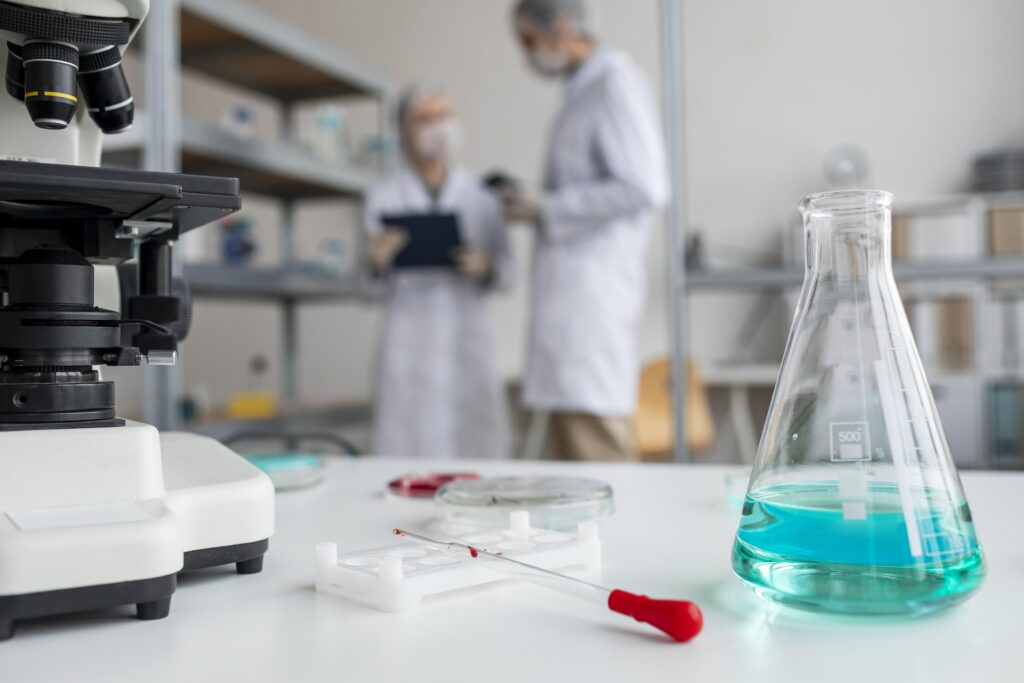
Manufacturers catering to these niche markets need to be especially diligent in testing their products to ensure that the nutritional content meets the specific needs of their target audience. Nutritional Lab Testing helps ensure that products designed for these specialized diets are properly labeled, minimizing the risk of mislabeling and ensuring customer satisfaction.
Building Brand Reputation
A strong commitment to transparency and food safety can significantly boost a company’s reputation. Manufacturers who invest in thorough Nutritional Lab Testing demonstrate their dedication to producing high-quality, safe, and nutritious products. This not only attracts health-conscious consumers but also helps build trust with retailers and regulators.
In an era where misinformation can quickly spread through social media, ensuring that your products are accurately labeled and meet nutritional standards is essential for maintaining a positive brand image. Brands that can demonstrate a commitment to accuracy and safety through Nutritional Lab Testing are more likely to gain consumer trust and loyalty.
Conclusion
In a competitive and highly regulated industry, Nutritional Lab Testing is indispensable for food manufacturers. It ensures accurate labeling, regulatory compliance, consumer safety, and product innovation, while also meeting the growing demand for transparency. By investing in Nutritional Lab Testing, manufacturers can not only avoid legal and financial risks but also build a stronger brand reputation and foster consumer trust.
As the food industry continues to evolve, driven by trends like health consciousness and specialized diets, the role of Nutritional Lab Testing will only become more important. For manufacturers, staying ahead of the curve through rigorous testing is not just a regulatory requirement—it’s a key driver of success in today’s market.











